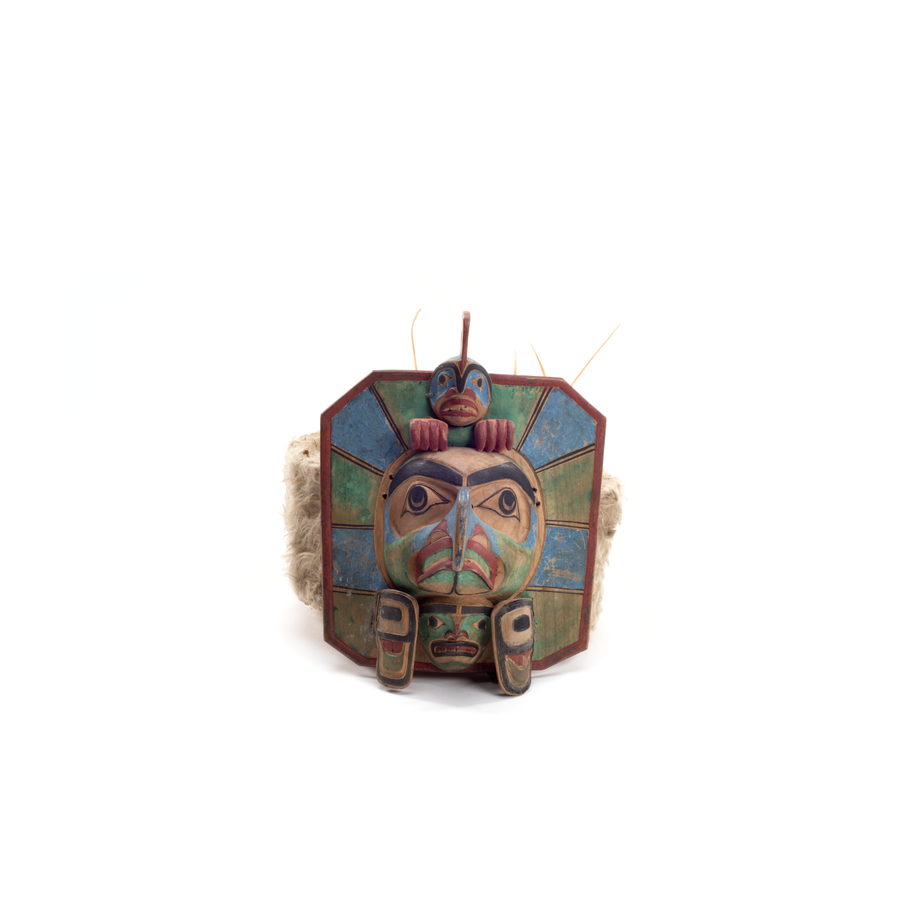Yaxwiwe'
Thunderbird & Killer whale Frontlet
This finely carved and painted frontlet does not have inlay like the others. This frontlet is missing a train of ermine and sealion whiskers or whale baleen to complete the crown.
Catalogue Information
Provenance
Surrendered to Indian Agent William Halliday on March 25, 1922. Halliday later displayed and photographed the seized pieces at the Parish Hall in Alert Bay.
George Heye, a private collector and the founder of the Museum of the American Indian (now the National Museum of the American Indian), was on a buying trip. He obtained 35 of the seized artefacts. The photographs were taken before he secured them. Halliday sold this object to Heye before listing and crating the remainder of the collection for shipping to Edward Sapir at the National Museum of Man (now the Canadian Museum of History). It appears on the “List of Potlatch Material Sold to Mr. Heye,” certified correct by Halliday. It became part of the MAI collection in 1924. It was repatriated to the U’mista and Nuyumbalees cultural societies and was returned from the NMAI with a first batch of items in 1993.
Materials
Wood, Alder; Skin, Goat; Fibre, Cotton; Hair, Sea Lion; Paint
Dimensions
21.0 cm x 21.0 cm
Accession Number
93.02.003
Physical Description
Chief's frontlet, mounted on a head piece of simulated fur with animal hair and four remaining sea lion whiskers inserted at the top. Square-shaped with the corners cut off, the frontlet is carved with three figures in high relief: the central face depicts a bird, probably a thunderbird with the nose recurved to touch the lower lip. Above the central face is a small humanoid head with hands with clenched fists. What looks like a dorsal fin protrudes above the head, and suggests that it represents a killer whale in human form. In lieu of the bird's chest, the bottom part shows a pair of wings enclosing a small humanoid head. The wings and chest might also be interpreted as the killer whale's fins and tail. The frontlet is decorated around the crest with alternate green and blue tiles delineated with black fine lines. These tiles would normally be inlaid with abalone. The rim itself is carved and painted red. The square-cut shape, and the tile pattern show much similarity with Hawk Headdress 02.05.003, and both frontlets were made by by the same hand, Xi’xa’niyus (Quentin Ehrmann-Curat, 2015).

 Video Downloads
Video Downloads